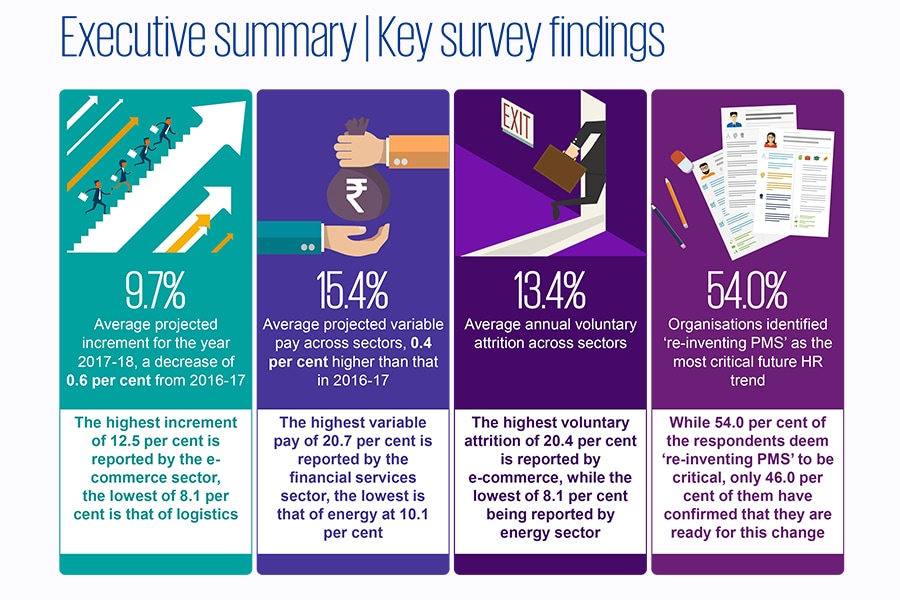Increments to bring cheer to Indian employees
KPMG's annual compensation trends survey pegs average salary hike at 9.7 percent. Proportion of variable pay to overall CTC to rise


 Image: Shutterstock (For illustrative purposes only)For India’s large and burgeoning salaried class, this is the most crucial time of the year: Appraisals. After all, all the economic development initiatives, policy reforms and increased domestic and foreign investment don’t mean much if the payslip doesn’t reflect the resultant prosperity.
Image: Shutterstock (For illustrative purposes only)For India’s large and burgeoning salaried class, this is the most crucial time of the year: Appraisals. After all, all the economic development initiatives, policy reforms and increased domestic and foreign investment don’t mean much if the payslip doesn’t reflect the resultant prosperity.
According to KPMG in India’s Annual Compensation Trends Survey 2017-18, Indian employees will have some reason to cheer this year as increments will happen. Though the flipside is that the proportion of such salary hikes will be marginally lesser compared to the previous fiscal.
The survey, which analyses 263 companies across 19 sectors, shows that the average projected salary increment for 2017-18 will be 9.7 percent. This is 0.6 percent decrease from 2016-17. Interestingly, the highest increment of 12.5 percent will be given to employees in the ecommerce sector, which has seen its fair share of challenges in the last year. Several ecommerce ventures have found it difficult to raise fresh capital to continue growing, and in the absence of profitability from operations, the wheels have come off for some of them. The higher projected compensation hike in the ecommerce sector can perhaps be explained by the high level of churn in the sector. The KPMG report pegs the level of voluntary attrition in the ecommerce sector at 20.4 percent (versus 13.4 percent overall).  Source: KPMGThe report also states that the lowest wage hike will be seen by the logistics sector (8.1 percent). Junior management employees are likely to see the highest increment (in percentage terms), which is also a function of their low salary base, at 10.4 percent. But the differential (in percentage terms) between the lowest layer and the topmost tier (9-9.1 percent) isn’t much, which means that top executives and senior management of companies are likely to see healthy increase in compensation.
Source: KPMGThe report also states that the lowest wage hike will be seen by the logistics sector (8.1 percent). Junior management employees are likely to see the highest increment (in percentage terms), which is also a function of their low salary base, at 10.4 percent. But the differential (in percentage terms) between the lowest layer and the topmost tier (9-9.1 percent) isn’t much, which means that top executives and senior management of companies are likely to see healthy increase in compensation.
Companies are also gradually shifting towards a performance-based rewards mechanism, which is evident by the fact that average projected variable pay across sectors (as a percentage of the overall cost-to-company) has increased to 15.4 percent for 2017-18, 0.4 percent higher than in the previous fiscal. The variable compensation for top executives (CEOs and direct reportees) and senior management (like business and function heads) will increase in this fiscal to as much as 23.6 percent, up from 22.8 percent last year.
First Published: Apr 04, 2017, 17:37
Subscribe Now